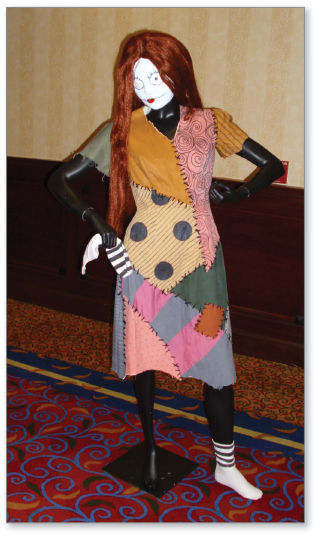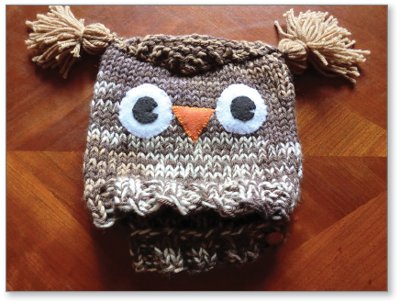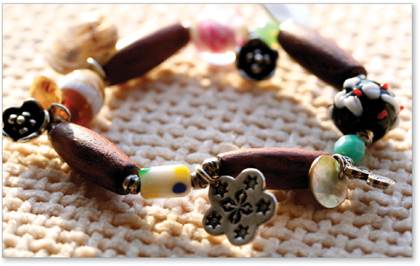Web Page: 3 Ways to Design Clothing Online
Web Page: Design Custom Team Uniforms
Web Page: Online Costume Design Collections
Web Page: Virtual Fashion Software
Web Page: 6 Ways to Design Your Own Jewelry Online
Does it serve its purpose well? Is it comfortable, durable, and attractive?
Does it look good from all sides?
Remove any distracting elements.
Rearrange parts that look out of place.
Redo parts that do not fit well or are otherwise unsuitable.
Add any needed elements to strengthen the design visually or physically.
Smooth any troublesome spots.
Finish any last touches for polish and durability.
At first glance, this Raggedy-Ann-style costume appears to be a haphazard collection of rags. Closer inspection reveals a careful design.
Note the repeated pattern of pink and gray patches diagonally across the bottom half and the gray sleeve above. Note as well how the three brown sections (in different shades) work with the tan section containing dark gray circles.
Also note the three shades of pink, including the patterned section that makes up much of the top.


Web Page: 3 Ways to Design Clothing Online
Web Page: Design Custom Team Uniforms
Web Page: Online Costume Design Collections
Web Page: Virtual Fashion Software
Web Page: 6 Ways to Design Your Own Jewelry Online
© 2014 Thoughtful Learning
